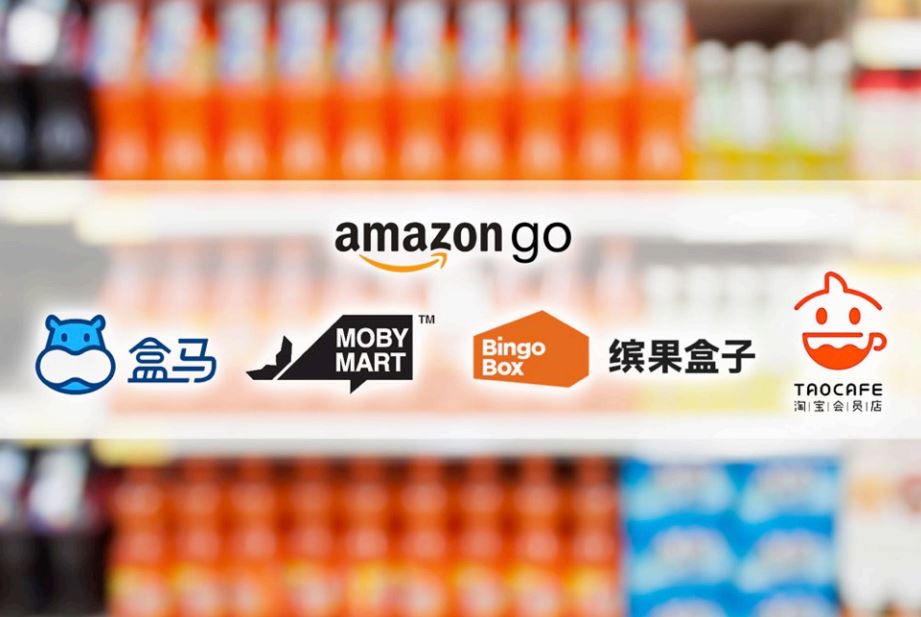Executive Summary
“Everything old is new again” and technological advances and imagination have brought the concept of unstaffed stores into the present. Sometimes people just want to enjoy a meal or pick up a few items without having to speak to another human being at the cash register.
The first automat, called Quisisana, opened in Berlin, Germany, in 1895, and automats came to New York City in 1912. The number of Horn & Hardart automats in the US peaked at 40, with the last one closing in 1991. Most of the locations have been converted into Burger King restaurants.
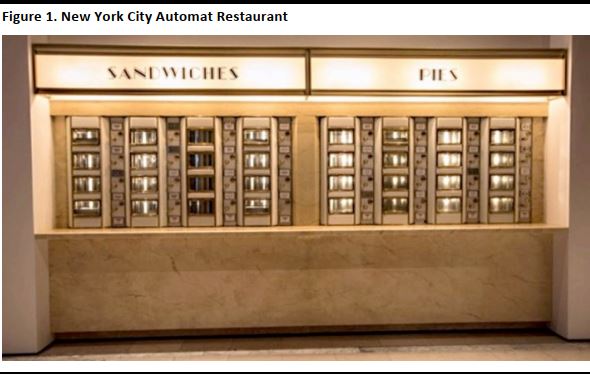
Source: TheAutomat.com
Enter Amazon, which gained a great amount of notoriety when it posted a video of its futuristic Amazon Go store on YouTube in December 2016. Even though the Amazon Go beta store in Seattle has reportedly hit technical snags and is not yet open to the public, Amazon, thanks to its size, is popularly understood to have invented the cashierless store concept. However, several companies in China and elsewhere likely started developing automated stores earlier and have already opened such stores to visitors. These stores, which are primarily operating in China, include BingoBox, Moby Mart and Tao Cafe.
Market Size
The US convenience store industry consisted of nearly 155,000 stores selling $233 billion worth of goods in-store in 2016, an increase of 3.2%, in addition to $316.8 billion worth of gasoline. Convenience store industry revenues are depicted in the figure below.

Source: The Association for Convenience & Fuel Retailing
China’s burgeoning convenience store market amounted to $8.9 billion (¥60 billion) in 2015, according to Kantar Worldpanel and the Fung Business Intelligence Center, up 13.2% from the prior year. At a 10.1% CAGR, the market would be worth about $73 billion today. The graph below shows the China convenience store market.
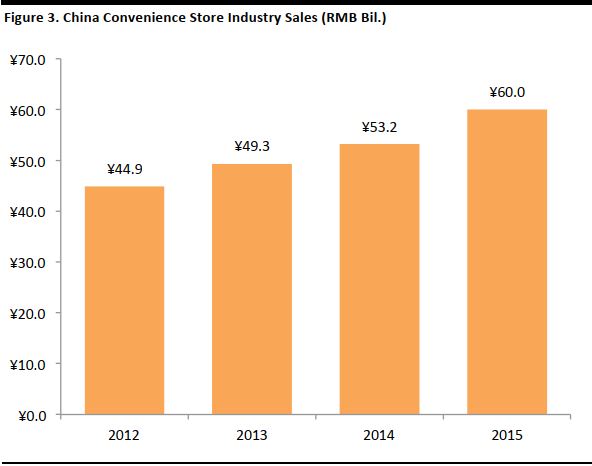
Source: Kantar Worldpanel, Bain Analysis; compiled by Fung Business Intelligence
Amazon Go
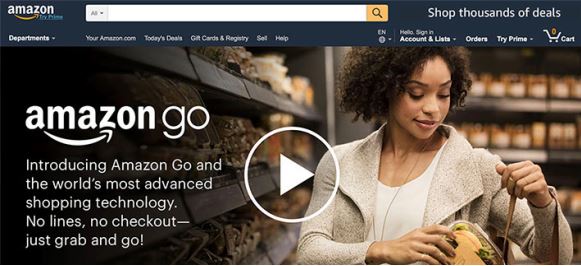
Source:Amazon.com
Amazon took the automated retailing concept further when it posted a
video of its Amazon Go prototype store on YouTube on December 5, 2016. The video shows consumers walking into the store, grabbing food items and then just walking out. The narrator asks what it would be like if Amazon could “weave the most advanced machine learning, computer vision and AI into the very fabric of a store so you never have to wait in line.” Visitors use the Amazon Go app to enter the store, then put away their phone and start shopping. Objects the shopper picks up are automatically added to a virtual cart and products the shopper puts back on the shelf are automatically removed, with the cart updating automatically. The store is described as operating thanks to a combination of computer vision, deep learning algorithms and sensor fusion (i.e., combining the results from multiple sensors), as in a self-driving car, and Amazon refers to the whole system as “just walk out technology.” When the customer leaves the store, the items are added up, the customer’s Amazon account is charged automatically and the receipt is sent to the app.

Source: Youtube
Following the release of the YouTube video, the Seattle, Washington, test store was opened for beta testing to Amazon employees. In late March,
The Wall Street Journal reported that technical glitches were delaying the opening of the store to the public. The article claimed that the store’s technology had difficulties tracking customers when more than 20 people were in the store and when customers made quick movements. There were other difficulties when items were moved from their designated spots on the shelves.
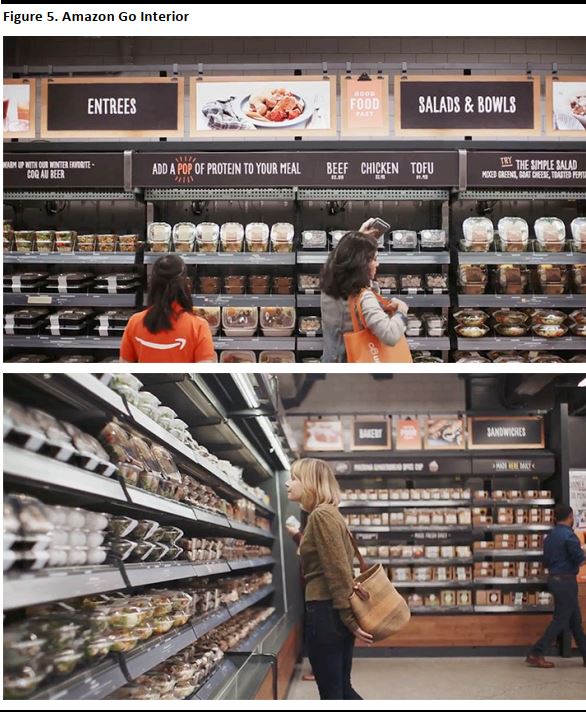
Source: YouTube
The technology behind Amazon Go became even more interesting following Amazon’s announcement on June 16 of its intention to acquire Whole Foods Market for $13.4 billion. The announcement spurred speculation about how the company could use the combination of the physical stores and its online technology to offer a network of advanced grocery stores.
BingoBox
China-based BingoBox (缤果盒子), founded in December 2014, appears to have successfully implemented the Amazon Go concept, opening its first automated store in Shanghai after a few months of testing in Zhongshan City in Guangdong Province.
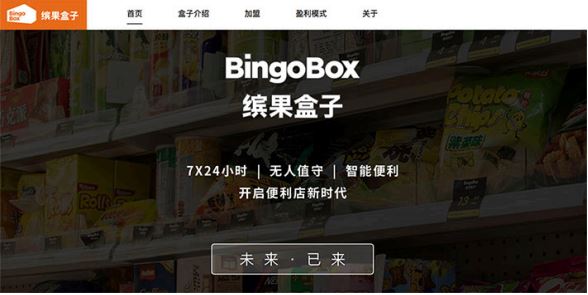
Source: Bnguohezi.com
The stores are mobile, and BingoBox claims that a human worker can take inventory and refill a store in just 20 minutes. Just four employees are needed to support 40 stores, according to the company. The company claims to offer prices that are 5% lower than at traditional convenience stores.
The photo below shows a BingoBox store.

Source: YouTube
The shopping process at BingoBox is similar to the process at Amazon Go:
- The shopper opens the door and registers using the WeChat app.
- The customer selects his or her items.
- The shopper scans the barcode of each item.
- The customer pays for the items via WeChat Wallet or Alipay.
- Cameras verify that the shopper is leaving the store with only merchandise that has been paid for.
Customers who need help in the store can receive assistance via video chat with a customer representative.
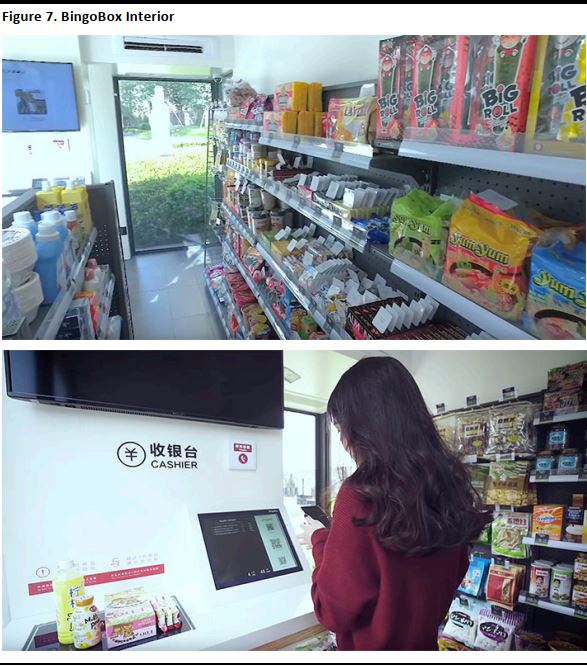
Source: YouTube
Just as important, BingoBox stores use facial recognition to identify unregistered users. The red caption in the photo below translates as “discovered an unauthorized face.” The identities of shoppers who do not pay are stored in a database.
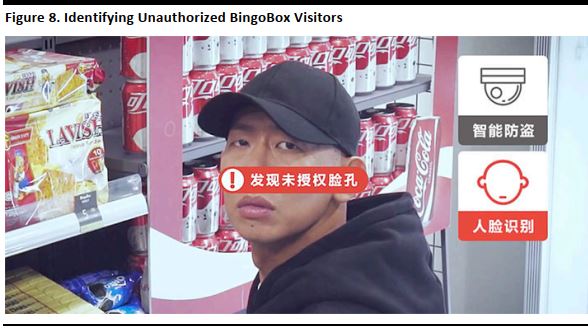
Source: YouTube
BingoBox is partnering with French supermarket Auchan to handle store inventory, and although it is currently operating eight outlets in Shanghai and Guangdong Province, it is targeting having 5,000 stores open by the end of the year. There were some problems in Shanghai, where insufficient air conditioning led to store closures as chocolates and some snacks melted, but BingoBox is likely to soon overcome these technical glitches. The company raised $14.7 million (¥100 million) in a series A funding round led by GGV Capital in July 2017.
Moby Mart
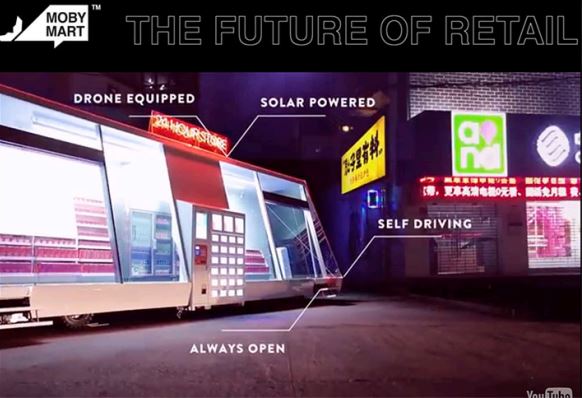
Source: Themobymart.com
Another unstaffed mobile store, Moby Mart, is currently undergoing beta testing in Shanghai. The store was created by Wheelys, an American chain of organic bicycle cafes, “in collaboration with Hefei University in China and Himalafy, a company that provides technology for unstaffed retail outlets,” according to the
South China Morning Post. In December 2016, Wheelys acquired Naraffar, which created a system of cashierless stores that were launched in Sweden more than a year before Amazon announced its Go format store.
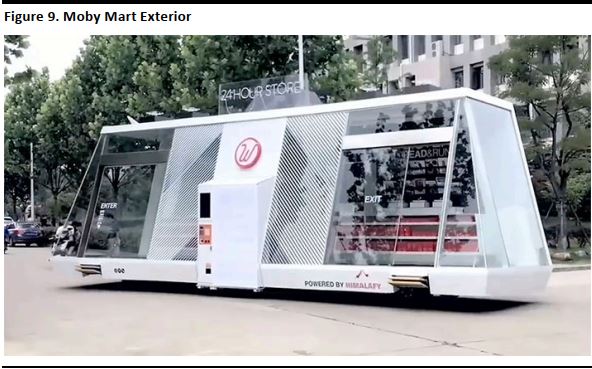
Source: YouTube
The Moby Mart store was designed with environmental concerns in mind: it runs on solar power and includes an air purifier to clean the surrounding air.
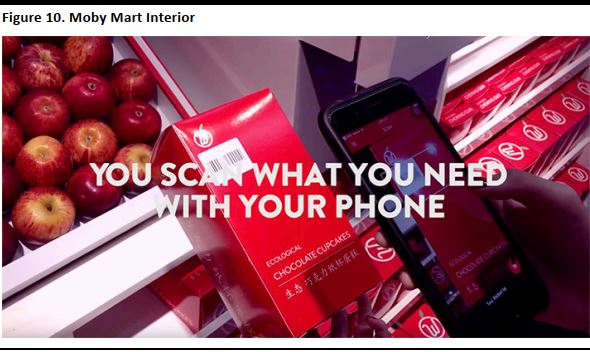
Source: YouTube
The shopping process at Moby Mart is similar to the process at Amazon Go, with all the shopping functions taking place via a smartphone app. Moby Mart claims to be launching production in China, and each store is expected to cost less than $100,000, about a tenth of the cost of a traditional store.
Tao Cafe
At the Hangzhou International Expo Center in July 2017, e-commerce giant Alibaba demonstrated an experimental, cashless Tao Cafe that uses artificial intelligence and data technologies and is powered by the Alipay e-payment platform. The cafe offered selected local merchants’ products available on Taobao, Alibaba’s consumer-to-consumer marketplace.
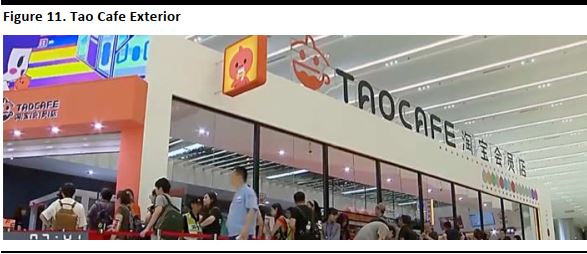
Source: YouTube
Visitors to the Tao Cafe scan a QR code in front of the shop, where a camera outfitted with face recognition technology confirms their identity, which is linked to their Taobao account. The 2,152-square-foot store sells prepared food, beverages and snacks and can hold 50 shoppers.
Visitors can use their smartphone to view the items on offer or shop on Taobao, and purchases are processed by Taobao/Alipay. Like BingoBox, the store has been tested to protect against shoplifters, who were charged for stolen items. Like Amazon Go, the cafe uses image recognition software to detect and charge for items customers pick up.
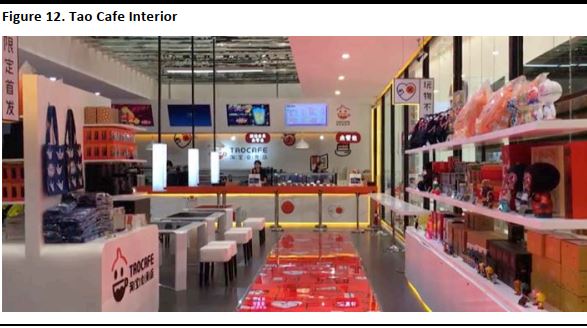
Source: YouTube
Alibaba has also launched cashless stores in Beijing and Shanghai called Hema Market (盒马集市) in which customers can scan barcodes for price information and pay through their Taobao or Alipay accounts. (The store pictured below has a depiction of a hippopotamus, as “Hema” is a homophone with hippo in Mandarin.)

Source: Alibabanews.com
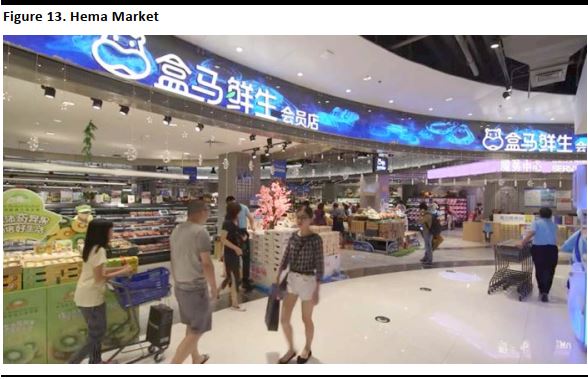
Source: YouTube
Other Companies’ Initiatives
A number of other companies have also addressed the cashierless store concept:
- The aforementioned Wheelys announced a cafe in the Philippines in March.
- 7-Eleven is testing a signature store in South Korea that uses biometrics (handprints) to identify customers.
- Chinese snack maker Wahaha launched five TakeGo stores in Hangzhou in June as part of an ambitious plan to open 10,000 stores in three years and 1 million in a decade.
Conclusion
While the concept of automatic or unstaffed stores goes back more than 100 years, Amazon recaptured our visions of the store of the future with the video of its first Amazon Go store. Amazon, however, is not alone in having this vision, and several other retailers—primarily in China—have sprinted ahead and already robotically welcomed customers into their cashierless stores. Given the numerous technologies involved, it is understandable that there would be glitches of the type that Amazon is battling—but these stores provide yet another option for time-pressed, smartphone-wielding consumers who are seeking convenience and a seamless shopping experience.
